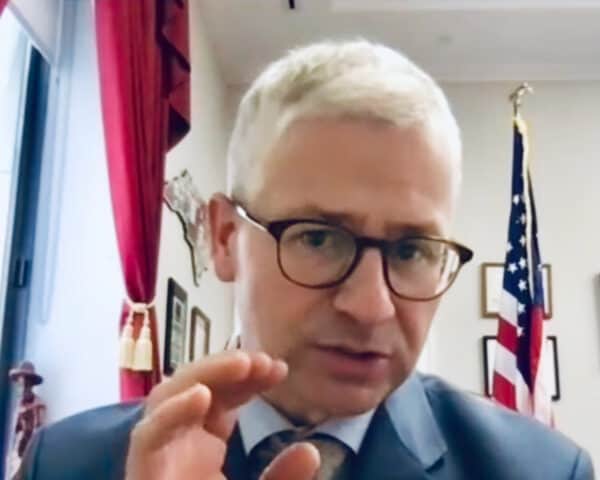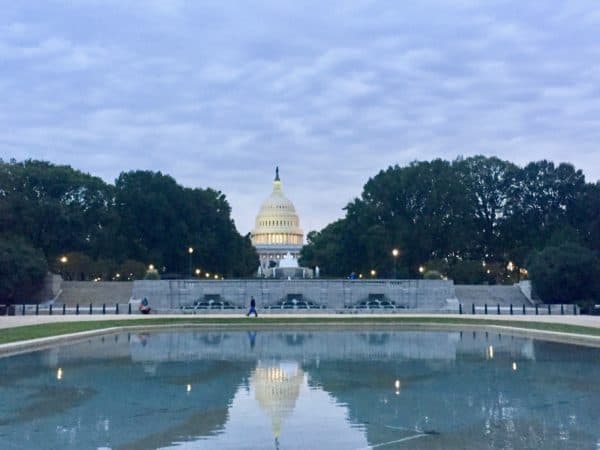Earlier this week, the House Committee on Financial Services held a hearing on stablecoins or digital assets tied to fiat currency. The Hearing was driven by the recent report by the President’s Working Group (PWG) on Financial Markets. While stablecoins are not (yet) systemically worrisome, the market has grown to $174 billion in market capitalization. Stablecoins currently represent more than 75% of trading on all digital asset trading platforms.
Last November, the PWG published its report that stated if stablecoins are appropriately regulated they could emerge as a more efficient and “more inclusive” payment option. But stablecoins and stablecoin-related activities “present a variety of risks.”
 The hearing involved a single witness, Nellie Liang, Under Secretary for Domestic Finance, U.S. Department of the Treasury, who participated in the PWG report and shared that “40 or 50” market participants were engaged as the PWG discerned its opinion.
The hearing involved a single witness, Nellie Liang, Under Secretary for Domestic Finance, U.S. Department of the Treasury, who participated in the PWG report and shared that “40 or 50” market participants were engaged as the PWG discerned its opinion.
Liang, in her prepared testimony, outlined known risks within the existing stablecoin marketplace. These included a “run risk” where stablecoin issuers do not effectively have the funds to cover an extraordinary move to redeem stablecoins for currency – similar to the proverbial run-on-the-bank scenario. Liang stated that she believes there have been runs on smaller stablecoins, “one or two but not large.’
There are other potential risks including macro-economic concerns as monetary policy may be impacted by the stablecoin market as it stands today.
The PWG report suggested that stablecoin issuers should be regulated further recommending issuers fall under existing banking rules or IDIs – “Insured Depository Institutions”
During the question and answer portion of the hearing, some interesting comments were made.
 Congressman Patrick McHenry, the ranking minority member on the Committee, asked why the report did not include a reflection on what states are currently doing in regulating stablecoins. Liang assured the Committee that states were engaged in the report but noted that state regulation is fragmented indicating a need for a uniform, national approach. Some members worried that pursuing a federal approach would hinder innovation that may be state-driven.
Congressman Patrick McHenry, the ranking minority member on the Committee, asked why the report did not include a reflection on what states are currently doing in regulating stablecoins. Liang assured the Committee that states were engaged in the report but noted that state regulation is fragmented indicating a need for a uniform, national approach. Some members worried that pursuing a federal approach would hinder innovation that may be state-driven.
Tether, the largest stablecoin in the world, took some heat from Committee members as the investigation by the New York Attorney General came up. The discussion revolved around the lack of transparency in regards to the assets held by Tether and the understanding that current assets are not “risk-free” (unlike dollars or treasury bills) creating additional risk for users. There is a concern that the “quality of the assets are not able to provide stable value.”
“… my understanding is they do not hold credit risk-free assets. Commercial paper. Not risk-free,” stated Liang. She added that she expects that they are not fully collateralized. They may not be able to deliver a dollar, under all conditions. “I have concerns about the opacity of stablecoins issuer.”
It was stated that Tether is the 7th largest holder of commercial paper.
Liang acknowledged that stablecoins have the ability to boost financial inclusion and help bring in the underbanked or unbanked population into the financial services realm. As well, stablecoins could reduce transaction costs for payments and transfers of funds including remittances. Everything could be handled on an iPhone as opposed to going to a bank.
“…the ability to improve inclusion is high,” said Liang.
Congressman Blaine Luetkemeyer stated that stablecoins are an opportunity to remain the world’s reserve currency and this is missing from the report. Liang agreed that stablecoins that were actually stable would benefit the US dollar, so a positive for the market participants.
Congressman Bill Huizenga asked an important question; are stablecoins securities? Commodities? Or money market funds? He inquired as to why the PWG report did not address this pressing concern. Liang said it was best to defer to the Securities and Exchange Commission to answer that question. As stablecoins now invest in securities but can be used as a payment vehicle it is a bit of a bridge between cash and money market funds.
Regarding central bank digital currencies, there is an acknowledgment that both could exist simultaneously but a CBDC could potentially squash innovation. While the Federal Reserve is studying a digital dollar now, its issuance is not a foregone conclusion.
Congressman French Hill stated that there is a fair amount of agreement on stablecoins within the Committee indicating that narrowly written legislation on establishing a sustainable Stablecoin could create an effective path.
There was some concern about applying banking regulations that may stifle innovation or diminish competition from aspiring (or existing) stablecoin issuers. This may depend on the existing regulator and its willingness to approve stablecoin issuers. And what about deposit insurance?
Liang indicated that a full set of bank regulations do not need to be applied to a platform that only issues stablecoins which could help streamline the regulatory process.
In the end, Liang said the PWG was very focused on balancing innovation and stability of stablecoins. While this may not have been fully reflected in the published document (one member said that risks were mentioned 132 times in the paper and benefits garnered only 2 mentions), Liang came across as supportive of stablecoins – that are appropriately regulated.
As there appears to be an element of consensus between Democrat and Republican members on the Committee there is a good chance that bipartisan legislation could emerge that will be acceptable to both policymakers as well as industry participants (perhaps not Tether).


